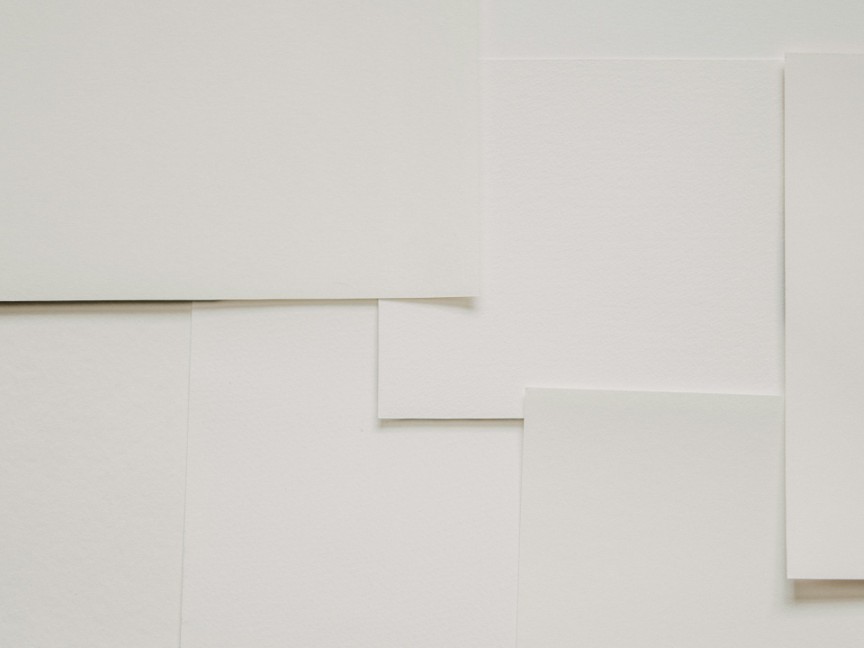When it comes to achieving smooth, glowing skin, exfoliation is a crucial step in any skincare routine. By removing dead skin cells from the surface of the skin, exfoliation helps reveal fresh, new skin underneath, resulting in a smoother and brighter complexion. However, not all exfoliation methods are created equal, and it’s important to understand the different types of exfoliation available in order to choose the best option for your skin.
There are two main types of exfoliation: mechanical and chemical. Mechanical exfoliation involves physically scrubbing away dead skin cells using abrasive particles or tools, while chemical exfoliation involves using acids or enzymes to dissolve dead skin cells. Both methods can be effective, but they work in different ways and are best suited for different skin types and concerns.
Mechanical Exfoliation
Mechanical exfoliation is perhaps the most well-known type of exfoliation, as it often involves popular products like scrubs, brushes, and loofahs. These physical exfoliants work by sloughing off dead skin cells through friction, leaving the skin looking smoother and more radiant. However, it’s important to choose a gentle exfoliant and be careful not to overdo it, as harsh scrubbing can cause irritation and damage to the skin.
There are many different types of mechanical exfoliants available, including sugar scrubs, salt scrubs, and microbead scrubs. Sugar and salt scrubs are natural exfoliants that help remove dead skin cells while moisturizing the skin, making them a great option for those with dry or sensitive skin. Microbead scrubs, on the other hand, are made from tiny plastic particles that provide a more intense exfoliation but can be damaging to the environment and should be avoided.
Another popular mechanical exfoliant is the use of exfoliating brushes or tools, such as cleansing brushes or exfoliating gloves. These tools can help improve the effectiveness of your cleanse by aiding in the removal of dead skin cells, but it’s important to use them gently and not apply too much pressure to avoid irritating the skin.
Chemical Exfoliation
Chemical exfoliation, on the other hand, involves using acids or enzymes to dissolve dead skin cells and promote cell turnover. This type of exfoliation is often considered more gentle and effective than mechanical exfoliation, as it can penetrate deeper into the skin and help address a variety of skin concerns, such as acne, hyperpigmentation, and fine lines.
There are several different types of acids used in chemical exfoliants, including alpha hydroxy acids (AHAs) like glycolic acid and lactic acid, beta hydroxy acids (BHAs) like salicylic acid, and fruit enzymes like papain and bromelain. These acids work by breaking down the bonds between dead skin cells, allowing them to be easily removed from the skin’s surface.
AHAs are best suited for those with dry or sun-damaged skin, as they help hydrate and exfoliate the skin, while BHAs are ideal for those with oily or acne-prone skin, as they can penetrate deep into the pores and help unclog them. Fruit enzymes, on the other hand, are gentle exfoliants that are suitable for all skin types and can help brighten and smooth the skin.
It’s important to note that chemical exfoliants can cause sensitivity and irritation in some people, especially those with sensitive skin or conditions like eczema or rosacea. It’s recommended to start with a lower concentration of acid and gradually increase the strength as your skin becomes more accustomed to it. It’s also important to wear sunscreen daily when using chemical exfoliants, as they can increase the skin’s sensitivity to the sun.
Choosing the Right Exfoliation Method for Your Skin
When choosing an exfoliation method for your skin, it’s important to take your skin type and concerns into consideration. If you have dry or sensitive skin, a gentle mechanical exfoliant or a mild chemical exfoliant like lactic acid may be best for you. If you have oily or acne-prone skin, a stronger chemical exfoliant like salicylic acid may be more effective at unclogging pores and reducing breakouts.
It’s also important to consider how often you should exfoliate. For most people, exfoliating 1-2 times a week is enough to maintain smooth, glowing skin without causing irritation. However, if you have particularly oily or acne-prone skin, you may benefit from more frequent exfoliation, while those with dry or sensitive skin may need to exfoliate less frequently.
In addition, it’s important to pay attention to how your skin reacts to exfoliation and adjust your routine accordingly. If you experience redness, irritation, or breakouts after exfoliating, it may be a sign that you’re using a product that is too harsh for your skin. In this case, it’s best to switch to a gentler exfoliant or reduce the frequency of exfoliation to avoid further damage.
In conclusion, exfoliation is an essential step in any skincare routine for achieving smoother, brighter skin. Understanding the different types of exfoliation available, including mechanical and chemical exfoliants, can help you choose the best option for your skin type and concerns. By incorporating regular exfoliation into your routine and choosing the right products for your skin, you can achieve a healthy, glowing complexion that radiates beauty from within.
For more information visit:
MIANIMED
https://miani.com
Chicago, United States
cart
Get ready to discover a world of luxury and elegance at miani.com. Stay tuned for an exclusive shopping experience that will elevate your style to new heights.
When it comes to achieving smooth, glowing skin, exfoliation is a crucial step in any skincare routine. By removing dead skin cells from the surface of the skin, exfoliation helps reveal fresh, new skin underneath, resulting in a smoother and brighter complexion. However, not all exfoliation methods are created equal, and it’s important to understand the different types of exfoliation available in order to choose the best option for your skin.
There are two main types of exfoliation: mechanical and chemical. Mechanical exfoliation involves physically scrubbing away dead skin cells using abrasive particles or tools, while chemical exfoliation involves using acids or enzymes to dissolve dead skin cells. Both methods can be effective, but they work in different ways and are best suited for different skin types and concerns.
Mechanical Exfoliation
Mechanical exfoliation is perhaps the most well-known type of exfoliation, as it often involves popular products like scrubs, brushes, and loofahs. These physical exfoliants work by sloughing off dead skin cells through friction, leaving the skin looking smoother and more radiant. However, it’s important to choose a gentle exfoliant and be careful not to overdo it, as harsh scrubbing can cause irritation and damage to the skin.
There are many different types of mechanical exfoliants available, including sugar scrubs, salt scrubs, and microbead scrubs. Sugar and salt scrubs are natural exfoliants that help remove dead skin cells while moisturizing the skin, making them a great option for those with dry or sensitive skin. Microbead scrubs, on the other hand, are made from tiny plastic particles that provide a more intense exfoliation but can be damaging to the environment and should be avoided.
Another popular mechanical exfoliant is the use of exfoliating brushes or tools, such as cleansing brushes or exfoliating gloves. These tools can help improve the effectiveness of your cleanse by aiding in the removal of dead skin cells, but it’s important to use them gently and not apply too much pressure to avoid irritating the skin.
Chemical Exfoliation
Chemical exfoliation, on the other hand, involves using acids or enzymes to dissolve dead skin cells and promote cell turnover. This type of exfoliation is often considered more gentle and effective than mechanical exfoliation, as it can penetrate deeper into the skin and help address a variety of skin concerns, such as acne, hyperpigmentation, and fine lines.
There are several different types of acids used in chemical exfoliants, including alpha hydroxy acids (AHAs) like glycolic acid and lactic acid, beta hydroxy acids (BHAs) like salicylic acid, and fruit enzymes like papain and bromelain. These acids work by breaking down the bonds between dead skin cells, allowing them to be easily removed from the skin’s surface.
AHAs are best suited for those with dry or sun-damaged skin, as they help hydrate and exfoliate the skin, while BHAs are ideal for those with oily or acne-prone skin, as they can penetrate deep into the pores and help unclog them. Fruit enzymes, on the other hand, are gentle exfoliants that are suitable for all skin types and can help brighten and smooth the skin.
It’s important to note that chemical exfoliants can cause sensitivity and irritation in some people, especially those with sensitive skin or conditions like eczema or rosacea. It’s recommended to start with a lower concentration of acid and gradually increase the strength as your skin becomes more accustomed to it. It’s also important to wear sunscreen daily when using chemical exfoliants, as they can increase the skin’s sensitivity to the sun.
Choosing the Right Exfoliation Method for Your Skin
When choosing an exfoliation method for your skin, it’s important to take your skin type and concerns into consideration. If you have dry or sensitive skin, a gentle mechanical exfoliant or a mild chemical exfoliant like lactic acid may be best for you. If you have oily or acne-prone skin, a stronger chemical exfoliant like salicylic acid may be more effective at unclogging pores and reducing breakouts.
It’s also important to consider how often you should exfoliate. For most people, exfoliating 1-2 times a week is enough to maintain smooth, glowing skin without causing irritation. However, if you have particularly oily or acne-prone skin, you may benefit from more frequent exfoliation, while those with dry or sensitive skin may need to exfoliate less frequently.
In addition, it’s important to pay attention to how your skin reacts to exfoliation and adjust your routine accordingly. If you experience redness, irritation, or breakouts after exfoliating, it may be a sign that you’re using a product that is too harsh for your skin. In this case, it’s best to switch to a gentler exfoliant or reduce the frequency of exfoliation to avoid further damage.
In conclusion, exfoliation is an essential step in any skincare routine for achieving smoother, brighter skin. Understanding the different types of exfoliation available, including mechanical and chemical exfoliants, can help you choose the best option for your skin type and concerns. By incorporating regular exfoliation into your routine and choosing the right products for your skin, you can achieve a healthy, glowing complexion that radiates beauty from within.
For more information visit:
MIANIMED
https://miani.com
Chicago, United States
cart
Get ready to discover a world of luxury and elegance at miani.com. Stay tuned for an exclusive shopping experience that will elevate your style to new heights.












